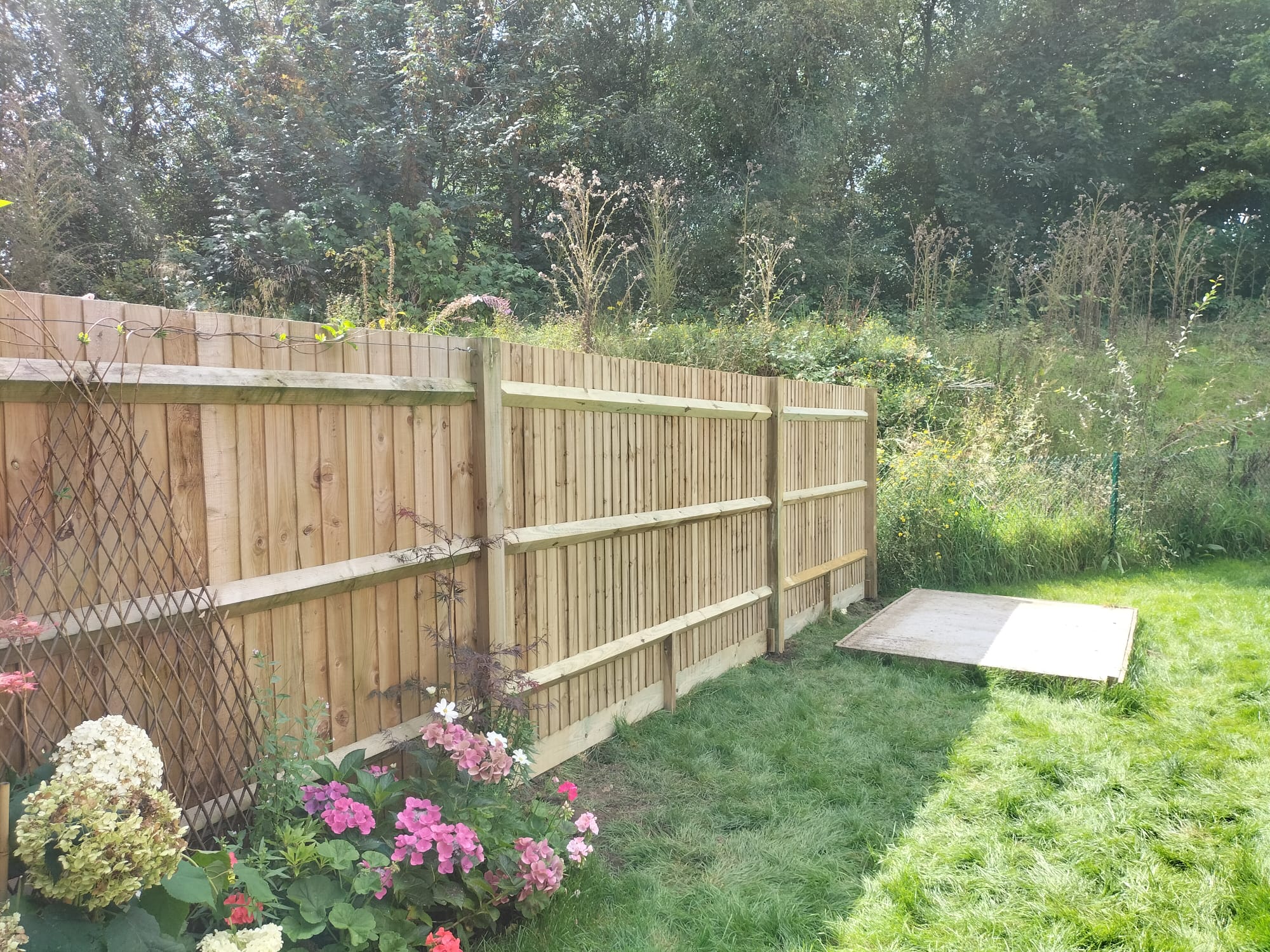

In the cacophony of urban sprawl, gardens stand as sanctuaries of serenity – yet, for many, these spaces teeter on the edge of chaos, cluttered with tools, toys, and the detritus of daily life. In an age where the pursuit of tranquillity has become ever more elusive, the humble garden, with its latent promise of peace, often falls short of its potential.
Yet, there lies an overlooked art in curating an outdoor realm of relaxation.
When curating your garden, selecting a theme is essential in establishing a coherent visual narrative. The chosen motif becomes a leitmotif, underpinning planting decisions, hardscaping elements and the overall ambiance. A well-defined theme ensures a seamless integration of various components, creating a harmonious sanctuary tailored to your personal aesthetics.
The conceptual phase is foundational in creating a tranquil garden space. It’s where personal taste intersects with landscape realities, where dreams coalesce into a tangible plan. Precision in this stage sets the stage for a garden that resonates with your vision for relaxation and tranquility.
Harmony between function and aesthetics is paramount. A garden must not only appease the senses with its beauty but also serve as a practical, serene retreat. It should be an extension of living space that beckons with comfort and solace, crafted through judicious planning and foresight.
A garden is a canvas, and plants are the brushes that add colour, texture, and emotion.
Once the concept crystallizes: it’s about quiet nooks under dappled shadows, the soft murmur of water, and the infusion of scented flora. A strategic orientation that captures sunlight at your preferred hours, placement of benches that invite pause—each detail enriches the symphony of your garden space. This precision in design exudes an air of effortless serenity that characterises a truly relaxing garden.
The palette of your garden sets the tone for its atmosphere, crafting visual harmony and emotional resonance.
Choose hues that reflect the mood you wish to evoke; soft blues and greens for calm, brighter tones for energy.
A focal point anchors the garden’s design, drawing the eye amidst nature’s tapestry. It acts as a visual full stop, creating pause in the observer’s journey.
For instance, a striking sculpture, a majestic tree, or a soothing water feature can serve as a powerful centre of attention, lending structure to your outdoor space. These elements should be strategically placed to guide the viewer through the garden, offering moments of reflection amid the natural context. Their presence can immeasurably elevate the aesthetic appeal and contribute to the overall sense of tranquillity.
Harmoniously, these central features act as the garden’s cornerstone, setting the stage for smaller, complementary elements. Consider the interplay of light and shadow, the juxtaposition of textures, and the dialogue between different plant species when positioning your focal point. The objective is to weave a cohesive narrative in your garden that is inviting and restorative in essence.
To transcend the mere visual appeal, consider infusion of comfort features that invite lingering. Sculpting spaces for relaxation within your garden, such as hammocks, swings, or padded benches, provides a tactile dimension to the experience, encouraging visitors to pause and immerse themselves.
In cultivating these enclaves of comfort, ensure that they harmonise with the natural palette and textures of the garden. Opt for materials that withstand the elements while echoing the garden’s ethos—like sustainably sourced woods or weather-resistant textiles. Incorporation of these elements not only augments the visual narrative but invites you to physically connect with the space—an embodiment of tranquillity.
When selecting garden furniture, prioritise durability, style, comfort, and how each piece will harmonise with the natural surroundings. Consider the material’s longevity and aesthetic appeal, ensuring a tranquil and inviting ambience.
Choose weather-resistant materials that maintain their allure throughout the seasons. Metals, teak, and synthetic resin are popular choices.
Comfort is paramount; select pieces with ergonomic design (for example, chairs with lumbar support) that promise relaxation.
Examine each item’s scale to ensure it complements your garden’s dimensions, avoiding an overpowering or sparse presence.
Consider environmentally friendly options when selecting your furniture, such as bamboo or recycled plastic, which contribute positively to your garden’s ecosystem and promote sustainability.
Finally, think how the furniture’s style enhances your garden’s theme. Whether you favour contemporary elegance or rustic charm, the right furniture should accentuate the garden’s character.
Incorporating water features transforms your garden into a soothing oasis, enhancing the sensory experience remarkably.
Water elements add a tactile dimension to the garden ambiance, inviting touch and interaction.
By carefully considering the scale and design, water features should complement, not overwhelm, your garden’s existing aesthetic.
Shade is paramount in creating a comfortable garden retreat, providing respite from the sun’s intensity. Structures such as arbours, pergolas, and gazebos can be both functional and decorative, offering an element of seclusion and architectural interest.
Strategically placed trees provide natural shade. Deciduous species offer seasonal variance, ensuring sunlight penetration during winter while creating a cool haven in summer.
For a flexible approach, consider retractable awnings or shade sails which allow control over the amount of sun and shade in your garden. They offer a modern solution that can be adjusted throughout the day or the seasons, according to your needs.
The garden, an extension of the home, can be transformed into an enchanting sensorial retreat that harmonizes with nature’s symphony. To establish this sanctuary, one must consider the garden’s multi-sensory dimensions—the tactile allure of foliage, the captivating fragrances of flowering blooms, the soothing murmurs of water features, and the visual tapestry woven by a kaleidoscope of colours. This requires meticulous planning to unite the elements of texture, scent, sound, and sight into a cohesive and tranquil environment. Tailoring these aspects to your sensory preferences creates a deeply personal and restorative haven that beckons relaxation and contemplation.
The olfactory qualities of a garden can significantly enhance its tranquility, with the right selection of aromatic plants creating an invisible tapestry of scent. These scents can invigorate or soothe the senses, setting the mood in one’s private oasis.
Communicate through carefully chosen florals such as lavender, which wafts a calming essence throughout the space. Its purple hues also contribute to the visual serenity.
Incorporating flowering shrubs like jasmine or gardenia adds layers of fragrance that intensify at dusk. The choice of these plants should take into account their blossoming cycles, ensuring a succession of scents throughout the seasons.
Attracting birds, bees, and butterflies to one’s garden is an enriching experience, both for the observer and the local ecosystem. The establishment of a wildlife-friendly havens can transform an ordinary space into a bustling hub of natural activity.
For the avid gardener, creating habitats for a diversity of species represents a commitment to environmental stewardship. Incorporating native plants, installing bird feeders, and ensuring a source of water can invite an array of creatures. Providing a variety of nesting materials and structures further encourages groupings of animals and insects to take residence and flourish in your garden’s unique environment.
Additionally, certain features such as wildflower meadows or log piles can be especially inviting. By fostering a garden that mimics natural habitats, one provides essential resources for wildlife to thrive. This, in turn, introduces natural pest control and pollination services that benefit the entire garden.
To truly succeed, deliberately designing spaces that accommodate the needs of local wildlife is paramount. Keeping areas of your garden undisturbed, avoiding pesticides, and planting a mixture of foliage that offers shelter and food, are key. These initiatives foster biodiversity and create a sanctuary where wildlife can thrive alongside human enjoyment, beautifully melding utility with the pleasure of nature’s company.
Enriching one’s garden with a plethora of textures creates a tapestry that delights the senses. Strategic contrasts enliven the entire space, contributing to a tranquil atmosphere that naturally evokes relaxation.
Incorporating a variety of plant species with differing foliar characteristics adds to this textural montage. Broad, waxy leaves juxtaposed with delicate, feathery fronds serve not only to entice the eye but also to create an environment that is complex and engaging at a tactile level.
Materials utilised in hardscaping play an equally vital role; the juxtaposition of smooth paving against the ruggedness of natural stone or the undulating contours of pebble pathways provides a multi-sensory experience. Attention to such detail generates a nuanced environment where touch is as significant as sight.
Beyond flora, consider diverse mulches like bark chips against fine gravel, each offering a unique underfoot sensation while performing their practical garden functions. Harmony arises not just from visual beauty but also from the symphony of textures experienced through every step.
Equilibrium between botanical biodiversity and architectural elements forms the cornerstone of a serene garden ambiance. Strategic planting can create a sensory buffer zone, absorbing the cacophony of external noise while providing tranquil visuals. Consider incorporating calming hues, such as soft greens and blues, which are known to reduce stress, alongside whispering grasses and gentle rustling leaves that add an auditory dimension of peacefulness to your garden.
The placement of water features, whether a delicate fountain or a gentle stream, introduces an ever-present undertone of tranquillity that soothes the senses. Lighting plays a pivotal role as well, with subtle illumination accentuating the garden’s features while fostering a sense of security and warmth, ensuring the garden remains a haven of stillness as day transitions to night.
Embrace low-maintenance plants that thrive with minimal intervention, conserving both time and resources without compromising aesthetic appeal.
Invest in quality mulching material to suppress weeds and retain soil moisture.
Implement an efficient irrigation system to automate watering, sparing you hours of toil and ensuring plants receive a consistent level of hydration, vital for their health and growth.
Adopt a strategic approach to planting, selecting species with similar light and soil requirements, to simplify care routines. Regular pruning and deadheading can significantly reduce the need for extensive gardening sessions later on, maintaining an orderly appearance and promoting robust plant health. Consider integrating “smart” garden technology to streamline and customize the care of your flora.
Creating secluded spaces within one’s garden is of paramount importance.
Cleverly positioned fencing, infused with climbing plants, can provide both obscurity and botanical beauty.
Strategic planting of shrubs and trees offers a naturalistic screen, enhancing seclusion without the harshness of bare walls.
Incorporating varied heights in vegetation layers produces a dynamic visual barrier, artfully impeding overviews from neighbouring perspectives.
Selecting evergreens ensures year-round concealment, affording unwavering privacy throughout the seasons.
Ambient sound is a crucial element, able to transform a garden into a sanctuary of serenity.
The strategic placement of water features, such as a gently babbling brook or a softly cascading waterfall, creates a continuously soothing audio backdrop. The sound of water is universally calming, masking unwanted noise from the outside world while promoting a sense of peace and tranquillity. Such sounds have been scientifically shown to lower stress levels, facilitating a more restful atmosphere.
Furthermore, wind chimes can add a melodious dimension to a garden’s soundscape. Tuned to precise musical notes, these chimes respond to the gentlest of breezes, bringing an aural element that is both unpredictable and harmonious. The tones produced by quality wind chimes can resonate deeply, invoking an almost meditative state among those who take the time to listen.